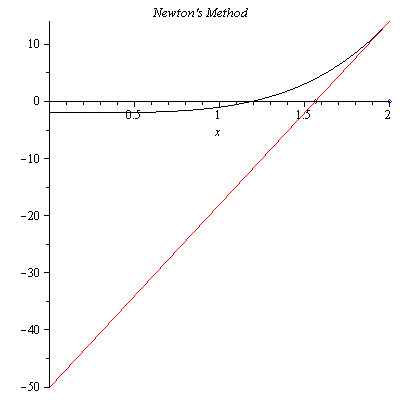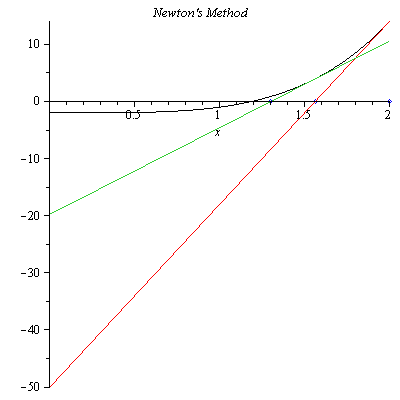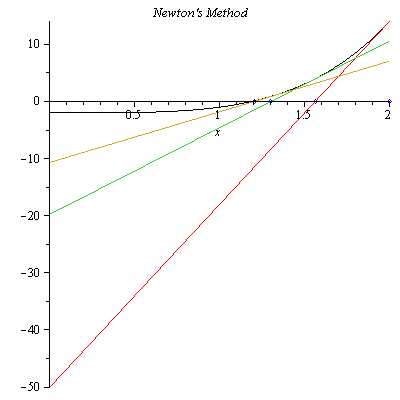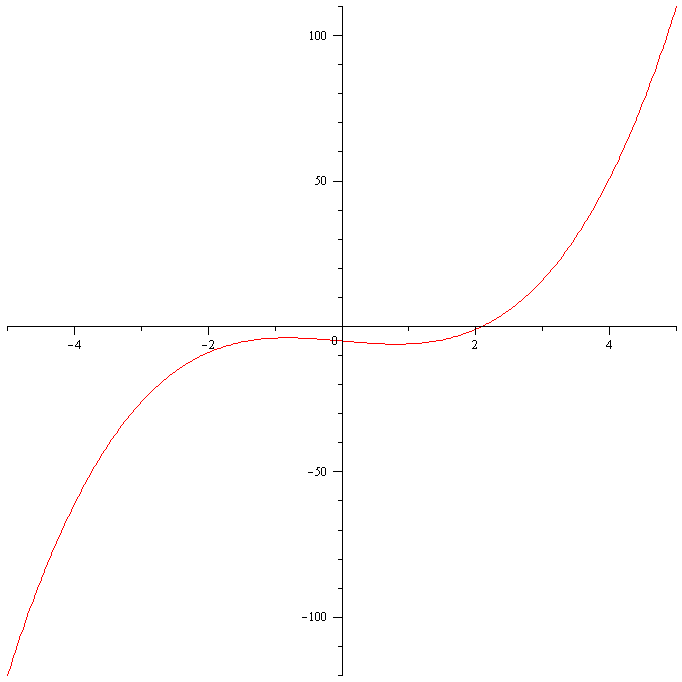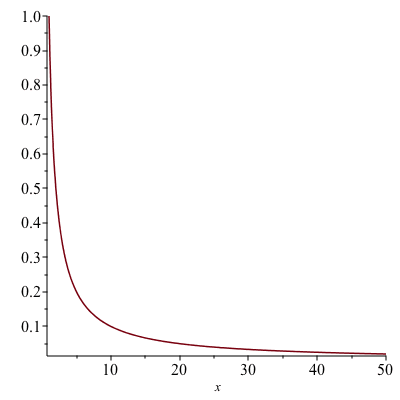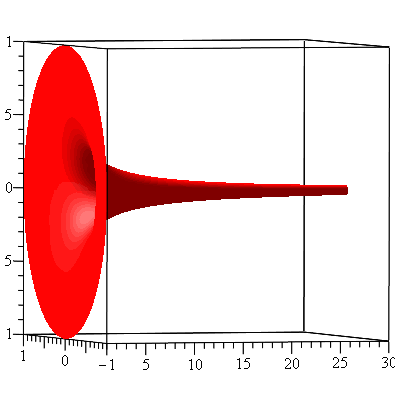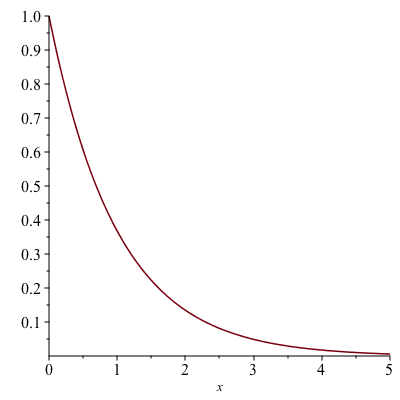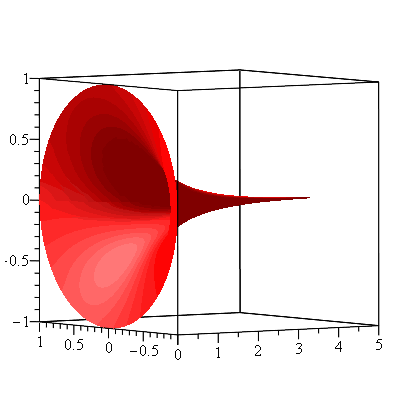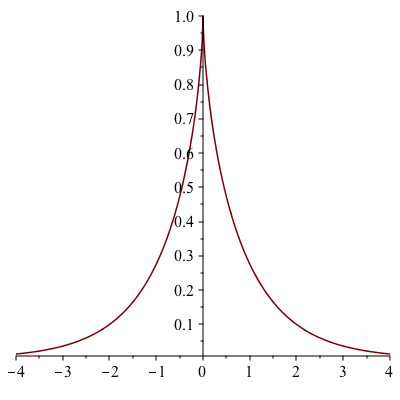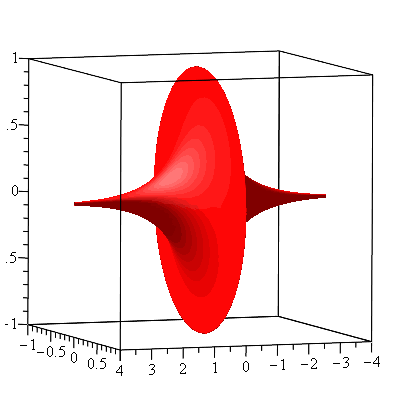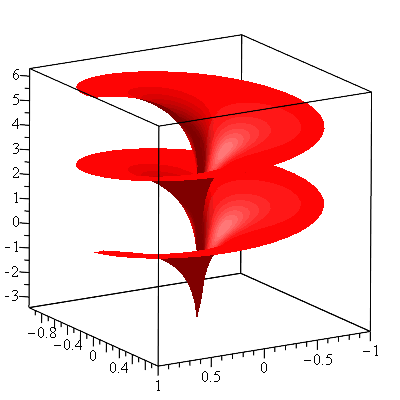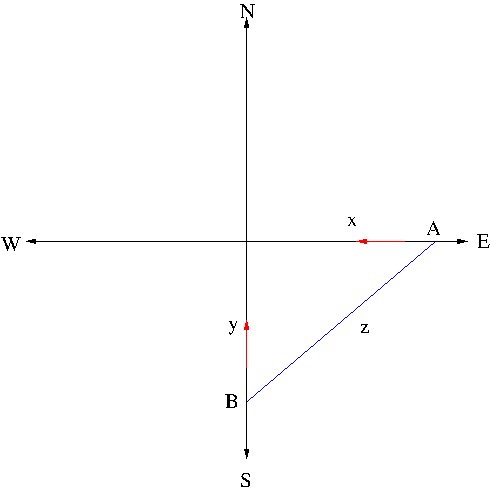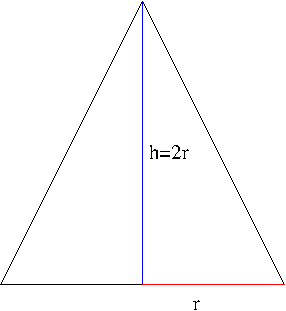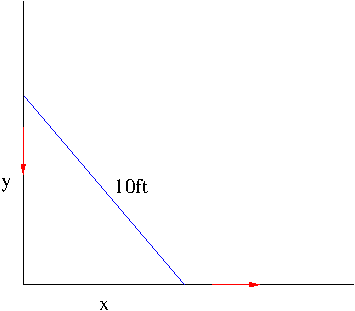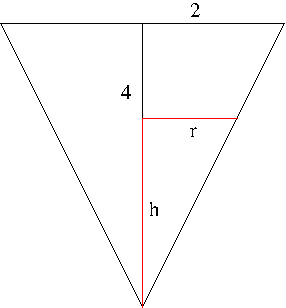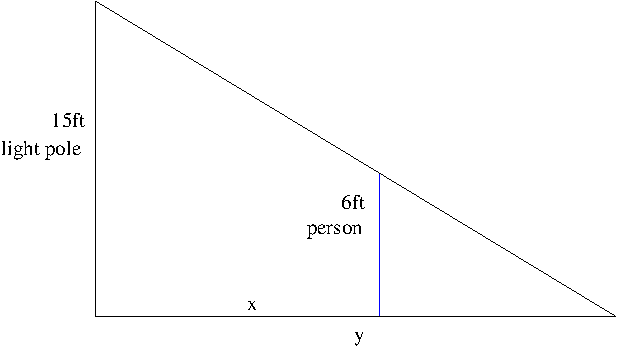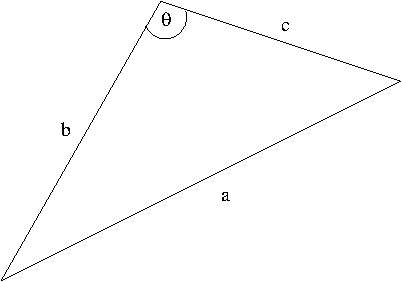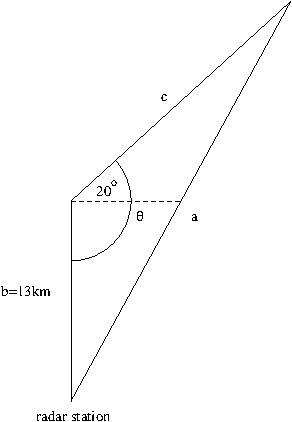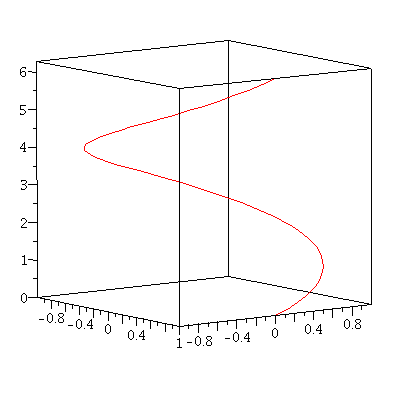In here, we discussed several examples of optimizations problems, mostly geometric optimization problems. In this note, we study business and economic optimization problems. Let us begin with the following example.
Example. Suppose that the price and demand for a particular luxury automobile are related by the demand equation $p+10x=200,000$, where $p$ is the price per car in dollars and $x$ is the number of cars that will be purchased at that price. What price should be charged per car if the total revenue is to be maximized?
Solution. Recall that the total revenue $R$ is given by $R=xp$, where $p$ is the price per item and $x$ is the number of items sold. In terms of $x$, the revenue is written as
$$R(x)=200,000x-10x^2$$
$R(x)=200,000-20x$ and set it equal to 0, we find the critical point $x=10,000$. Since $R^{\prime\prime}(x)=-20<0$, $R(10,000)=100,000,0000$, i.e. a billion dollars. We don’t actually calculus to see this. $R(x)$ is a quadratic function with negative leading coefficient, so it assumes as maximum at the $x$-coordinate of its vertex, $x=-\frac{b}{2a}=-\frac{200,000}{2\cdot 10}=10,000$. To answer the question, the price at which the total revenue $R$ is maximized is
$$p=-10(10,000)+200,000=100,000\ \mathrm{dollars}$$
As you might have noticed by now, it could have been shorter if we wrote $R$ in terms of the price $p$ since the question is about the price at which the revenue is maximized. In terms of $p$, $R$ is written as
$$R(p)=-\frac{p^2}{10}+20,000p$$
Either by solving $R'(p)=-\frac{p}{10}+20,000=0$ or by $p=-\frac{b}{2a}=\frac{20,000}{\frac{2}{10}}$, we find $p=\$ 100,000$.
Example. Suppose that the cost, in dollars, of producing $x$ hundred bicycles is given by $C(x)=x^2-2x+4900$. What is the minimum cost?
Solution. Either by solving $C'(x)=2x-2=0$ or by $x=-\frac{b}{2a}=-\frac{-2}{2\cdot 1}$, we find that $C(x)$ assumes the minimum at $x=1$, i.e. the cost of production is the minimum when 100 bicycles are produced. The minimum cost is $C(1)=4899$ dollars.
Example. In the preceding example, find the minimum average cost.
Solution. Recall that the average cost $\bar C(x)$ is given by $\bar C(x)=\frac{C(x)}{x}$, so we have
$$\bar C(x)=x-2+\frac{4900}{x}$$
Setting $C'(x)=1-\frac{4900}{x^2}$ equal to 0, we find $x=70$. Since $C^{\prime\prime}(x)=\frac{9800}{x^3}>0$ when $x=70$, $\bar C(70)=138$ (in dollars) is the minimum average cost.
Here is an interesting theorem from economics.
Theorem. The average cost is minimized at a level of production at which marginal cost equals average cost, i.e. when
$$C'(x)=\bar C(x)$$
Proof. Since $\bar C(x)=\frac{C(x)}{x}$, we obtain by the quotient rule
$$\bar C'(x)=\frac{xC'(x)-C(x)}{x^2}$$
Setting $\bar C'(x)=0$, we have
$$xC'(x)-C(x)=0,$$
that is
$$C'(x)=\frac{C(x)}{x}=\bar C(x)$$
The preceding example can be quickly answered using this Theorem. Setting $C'(x)=\bar C(x)$, we have
$$2x-2=x-2+\frac{4900}{x}$$
Simplifying this we obtain
$$x^2=4900$$
Hence, $x=70$ as we found earlier.
Example. The cost in dollars of producing $x$ stereos is given by $C(x)=70x+800$. The demand equation is $20p+x=18000$. (a) What level of production maximizes profit? (b) What is the price per stereo when profit is maximized? (c) What is the maximum profit?
Solution. From the demand equation, we obtain $p=-0.05x+900$. Recall that the profit function $P(x)$ is given by
\begin{align*} P(x)&=R(x)-C(x)\\ &=xp-C(x)\\ &=-0.05x^2+900x-(70x+800)\\ &=0.05x^2+830x-800 \end{align*}
Setting $P'(x)=-0.1 x+830$ equal to 0, we find the critical point $x=8300$. $P^{\prime\prime}(x)=-0.1<0$, so the profit has the maximum at $x=8300$.
(a) The level of production that maximizes profit is $x=8300$.
(b) The price per stereo at which profit is maximized is
$$p=-0.05(8300)+900=485\ \mathrm{dollars}$$
(c) The maximum profit is
$$P(8300)=-0.05(8300)^2+830(8300)-800=3,443,700\ \mathrm{dollars}$$
Here is another interesting theorem from economics.
Theorem. The profit is maximized when the marginal revenue equals the marginal cost, that is, when $R'(x)=C'(x)$.
Proof. Differentiating revenue function $P(x)=R(x)-C(x)$, we have
$$P'(x)=R'(x)-C'(x)$$
The critical point is obtained from $P'(x)=0$, i.e. when $R'(x)-C'(x)=0$ or $R'(x)=C'(x)$. That is, when the marginal revenue equals the marginal cost. This completes the proof.
The preceding example can be answered quickly using this theorem. Setting $R'(x)=C'(x)$, we have
$$-0.1x+900=70$$
or
$$x=8300$$
Example. A theater has 204 seats. The manager finds that he can fill all the seats if he charges \$4.00 per ticket. For each ten cents that he raises the ticket price he will sell three fewer seats. What ticket price should he charge to maximize the ticket revenue?
Solution. When the manager increases $n$ cents per ticket price, the number $x(n)$ of tickets sold is $x(n)=204-3n$ and the price $p(n)$ per ticket is $p(n)=4+0.1n$. Then the total revenue is given by
\begin{align*} R(n)&=x(n)p(n)\\ &=(204-3n)(4+0.1n)\\ &=-0.3n^2+8.4n+816 \end{align*}
Setting $R'(n)=-0.6n+8.4$ equal to 0, we find $n=14$. Since $R^{\prime\prime}(n)=-0.6<0$, the ticket revenue is maximized when $n=14$, i.e. when the ticket price is \$4.00+\$1.40=\$5.40.
Alternatively, one can easily find the demand equation which is linear in this case. The equation of line through two points $(204,4)$ and $(201,4.1)$ is given by
$$p=-\frac{1}{30}x+\frac{54}{5}$$
and so we obtain the revenue function
$$R(x)=-\frac{1}{30}x^2+\frac{54}{5}x$$
Setting $R'(x)=-\frac{x}{!5}+\frac{54}{5}$ equal to 0, we find $x=162$ and plugging this into the demand equation for $x$ gives $p=5.40$.
Let us consider a demand equation given as $x=D(p)$. If one were to consider $\frac{dx}{dp}$, the rate of change of demand with respect to price, often it would be convenient to have it as a dimensionless quantity, i.e. one that does not depend on particular units. For that we define a new quantity by dividing $\frac{dx}{dp}$ by $\frac{x}{p}$. The resulting ratio is called the elasticity of demand and is denoted by $\epsilon_D$.
Definition. The elasticity of demand $\epsilon_D$ is defined by
$$\epsilon_D=\frac{\frac{dx}{dp}}{\frac{x}{p}}=\frac{p}{x}\frac{dx}{dp}$$
In economics, demand decreases as price increases, so demand function is a decreasing function, i.e. $\frac{dx}{dp}<0$. Since both $x$ and $p$ are positive, the elasticity $\epsilon_D$ is always negative. The demand is said to be elastic if $|\epsilon_D|>1$, inelastic if $|\epsilon_D|<1$, and unitary if $|\epsilon_D|=1$.
Definition. The relative change of a function whose equation is $p=f(a)$ as $q$ changes from $q_1$ to $q_2$ is
$$\frac{f(q_2)-f(q_1)}{f(q_1)}$$
The percentage change is defined as
$$100\times\frac{f(q_2)-f(q_1)}{f(q_1)}$$
Example. (a) If the demand equation is $x=100-3p$ , find the elasticity of demand when $p=1$.
(b) Show that the elasticity equals the ratio of the relative change in demand to the relative change in price when $p$ changes from 1 to 2.
Solution. (a) $x=100-3p$, $\frac{dx}{dp}=-3$, and when $p=1$, $x=97$, so
$$\epsilon_D=\frac{p}{x}\frac{dx}{dp}=-\frac{3}{97}$$
Since $|\epsilon_D|<1$, the demand is inelastic.
(b) As $p$ changes from 1 to 2, the relative change in price is $\frac{2-1}{1}=1$. When $p$ changes from 1 to 2, $x$ changes from 97 to 94, so the relative change in demand is $-\frac{3}{97}$. Hence, the ration of the relative change in demand to the relative change in price is
$$\frac{-\frac{3}{97}}{1}=-\frac{3}{97}=\epsilon_D$$
Example. Given the demand equation $x=\sqrt{100-2p}$, find the elasticity of demand when $p=18$. Is the demand elastic or inelastic at $p=18$?
Solution. The elasticity $\epsilon_D$ at $p=18$ is
\begin{align*} \epsilon_D&=\frac{p}{x}\frac{dx}{dp}\\ &=\frac{18}{\sqrt{100-2(18)}}\left(-\frac{1}{\sqrt{100-2p}}\right)_{p=18}\\ &=\frac{18}{8}\left(-\frac{1}{8}\right)\\ &=-\frac{9}{32} \end{align*}
Since $|\epsilon_D|=\frac{9}{32}<1$, the demand at $p=18$ is inelastic.
Example. Show that when the revenue is maximized, $|\epsilon_D|=1$.
Solution. The total revenue is $R=xp$, so
\begin{align*} \frac{dR}{dp}&=\frac{dx}{dp}p+x\\ &=x\left(1+\frac{p}{x}\frac{dx}{dp}\right)\\ &=x(1+\epsilon_D) \end{align*}
Since $x>0$, $\frac{dR}{dp}=0$ if and only if $\epsilon_D=-1$. If $\epsilon_D<-1$, then $|\epsilon_D|>1$ i.e. the demand is elastic, and $\frac{dR}{dp}<0$ (the revenue is decreasing). If $-1<\epsilon_D<0$, then $|\epsilon_D|<1$ i.e. the demand is inelastic, and $\frac{dR}{dp}>0$ (the revenue is increasing). So, the revenue is maximized when $|\epsilon_D|=1$.
When demand is a function of price, the elasticity can be written as
$$\epsilon_D=\frac{\frac{p}{x}}{\frac{dp}{dx}}$$


